
A Treasure Trove for Chinese-Australian History
Trove has been a Godsend and a game changer for those of us who research within the field of history we affectionately term #chinozhist (Chinese-Australian history). It offers a wealth of resources for those focusing on the first major migrations of Chinese to Australia during the mid-1800s-early 1900s and the time of ‘White Australia’ policies
In my work on Chinese merchants as part of my PhD project (completed at Griffith University, 2021), ‘Chinese Merchants in the Northern Territory, 1880-1950: A case study’, and its spin-off projects, Trove has proved invaluable. It has been incredibly useful in understanding Chinese businesses operating in Australia and further afield, and the families that ran them. Trove’s archive of historical newspapers offers up numerous articles about Chinese merchants, their business dealings, and the social activities that they and their families engaged in (including Chinese cultural events such as Chinese New Year which were held for the wider community as well).
A key tip if you are researching Chinese merchants, businessmen or storekeepers in Australia is that these men were often reported in the press by their title plus their business name. For example, my great-grandfather, Fong Siu Wing (also known as ‘Fong Sui Wing’ or ‘Fong How’), was referred to in articles, advertisements, or notices as ‘Mr Wing Wah Loong’ (the name of his main business in Darwin, then called ‘Palmerston’). Confusingly, if a son inherited the business, he might then be referred to as ‘Mr (business name)’. Likewise, if you are searching for the wives of these men, the wives might be referred to by their title and the family’s business name. My great-grandmother, Young See, wife of Fong Siu Wing, was reported as ‘Mrs Wing Wah Loong’. Searching Trove following this pattern helped me to locate many sources to write about the wives of Chinese merchants who became businesswomen. This research formed the basis of one of my thesis chapters and my chapter on Darwin Chinese businesswomen for the ground-breaking edited collection, Locating Chinese Women: Historical Mobility between China and Australia (2021, Hong Kong University Press). I applied this methodology to locate sources in Trove and write an article about the prolific part-Chinese Queensland businesswoman Jessie Tam Sie.
Trove’s archive of historical newspapers also contains:
- Classified and display advertising (being able to filter search results by ‘Place’, ‘Category’ and ‘Date range’ is handy for this), which can provide details of names and locations of businesses, partnerships, what kinds of products and services the business dealt in and where. This advertisement for my great-grandfather’s business in Darwin, Wing Wah Loong, is prominently displayed on the front page of the Northern Territory Times and Gazette. It lists additional branches in Pine Creek (NT), Broome (WA) and Sydney (NSW) and promises ‘shipments…by every boat’, showing the extensive nature of this Chinese family business network.
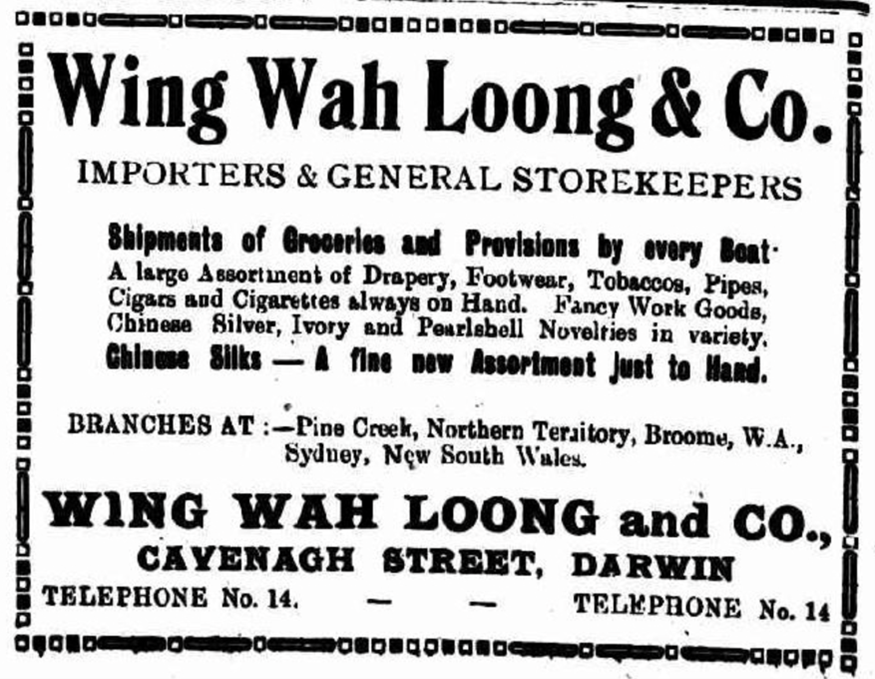
- Shipping reports, containing information about merchants and their families travelling around Australia and between Australia and other sites in Asia and the Pacific, when they departed and returned; there are also reports of products imported and exported by Chinese companies.
- Important examples of ‘Chinese voices’ through petitions written by Chinese merchants and storekeepers on behalf of their communities in the form of letters to the editor, protesting against discrimination (more about these in my article on Australian Chinese protests).
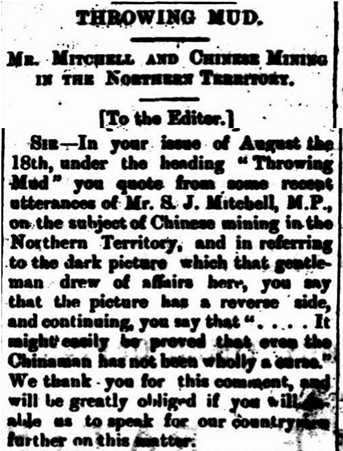
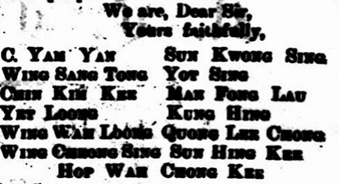
- Proof of positive interactions between white Australians and Chinese Australians, such as this show of solidarity of European businessmen for Chinese businessmen in Darwin in 1906 (my great-grandfather is second from the left in the front row of both photographs; he is listed in the caption by his business name, ‘Wing Wah Loong’)
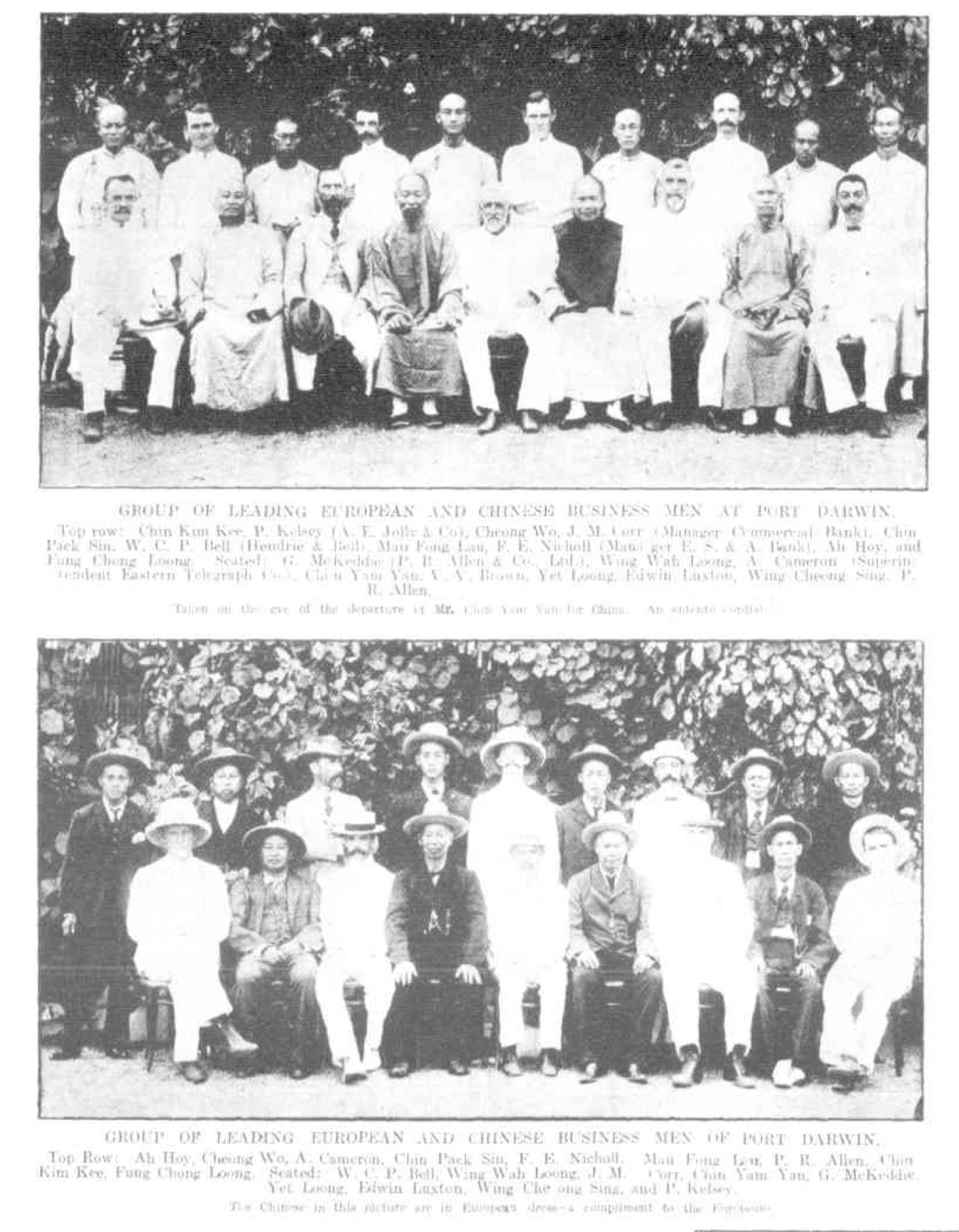
- Lists of donations to charities made by Chinese merchants and their families, to support causes such as flood and famine relief in China, and local community events such as Sunday School picnics and gymkhanas, demonstrating their continued involvement in community life in both China and Australia
Trove has been adding to its depository of early Australian Chinese language newspapers such as the Chinese Advertiser (1856), Chinese Australian Herald (1894-1923), Tung Wah Times (1901-1936; index here), Chinese Times (1902-1922). Historian Kate Bagnall has written a blog post on this. If you have the name of the business or merchant in traditional Chinese characters, you can use these to search Trove. I was able to find business advertising that provided further proof that my family’s business network was not only extensive in having businesses in different parts of Australia, but that it also had branches in other countries. An advertisement for our family’s Sydney business, Wing Wah, published in the Chinese Australian Herald in 1906, states that the business has a branch in Hong Kong. Usefully, it also says that the first branch was established in Port Darwin, which has helped me with piecing together the expansion of the business network. The findings of this research will be published in July 2024 as a chapter in an edited collection, Chinese Colonial Entanglements: Commodities and Traders in the Southern Asian Pacific, 1880-1950 (University of Hawaii Press).
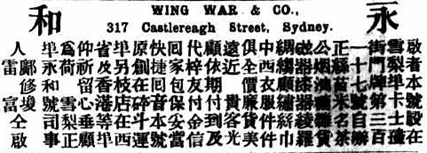
In December 2023, I presented a paper for the Royal Historical Society of Queensland on Chinese youth clubs in Queensland in the 1930s-1940s, and how they gave performances of Chinese history and folklore to raise money for charitable efforts in Australia and China. Such clubs could also be patriotic and political in expressing support for Sun Yat-sen and the Chinese Republic. This paper draw primarily on newspaper articles from Trove as primary sources, such as this one accompanied by a charming photograph!
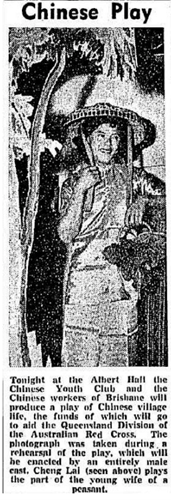
One of my favourite things about Trove is falling down ‘rabbit holes’ where you come across something obscure while searching for something else and discover more sources in Trove about this intriguing event, organisation or person. While researching Australian Chinese businesswomen, I kept coming across a woman called ‘Madam Mosquito’, a Chinese guerrilla fighter against Japanese occupation during the 1930s-1940s, who kept eluding the Japanese with her cunning. I filed it away as something to investigate when I finished my PhD. Last year, I decided that Madam Mosquito’s story was too good not to be told. So gathering the articles I had collected about her from Trove, as well as from other sites, plus Chinese language sources that a young historian in Singapore helped locate, I was able to present Madam Mosquito’s story at the Australian Historical Association Conference. Hopefully that paper will become a publication.
Recently, I posted in a Rockhampton History Facebook page looking for information about my grandparents’ businesses in Rockhampton during the 1930s-1950s. A keen historian responded with a link to an article on Trove about my grandparents’ wedding in 1940. The article, ‘A Chinese Wedding’, provided lots of lovely details of their wedding, including the requisite detail of what the women in the bridal party wore and who attended. But it also indicates how such weddings, dubbed ‘unusual’ for ‘(combining) English and Chinese customs’, were still seen as somewhat of a novelty at that time.
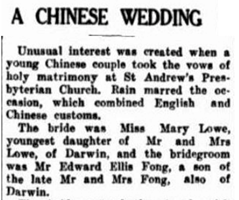
My work (and my understanding of my family history!) would not be what it is without Trove.
